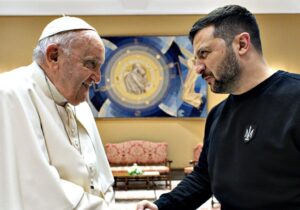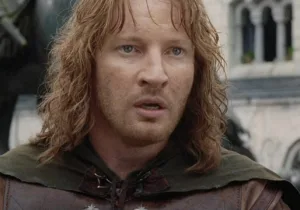Last month, the movement to end genocide marked two important milestones. On March 17, the U.S. State Department ruled that the Islamic State’s systematic slaughter of Christians, Shiite Muslims, and Yezidis in northern Iraq and Syria constitutes genocide. It was a rare application of the “G” word by the Obama Administration, and followed a rare unanimous vote in the U.S. House of Representatives to do the same. One week later, an international tribunal found Serb leader Radovan Karadzic guilty of committing the crime of genocide against Bosnian Muslims, overcoming two decades of challenges to its legitimacy in reaching the landmark verdict.
Both decisions signal a renewed international commitment to condemn genocide. But as Secretary Kerry said in announcing the former, “Naming these crimes is important, but what is essential is to stop them.” Stopping genocide and other crimes against humanity was the impetus behind the Responsibility to Protect, or “R2P”—an international norm that emerged following the genocides in Bosnia and Rwanda during the 1990s, and endorsed by governments at the United Nations World Summit in 2005.
Essentially, R2P obligates states to protect their citizens from mass atrocities such as genocide. If a government fails to do so—because it is unable, unwilling, or complicit—the international community has a responsibility to intervene. Proponents of the policy stress that military intervention, which requires United Nations Security Council authorization, is a last resort, after efforts to prevent or assist have been exhausted. Notwithstanding these caveats, R2P undeniably provides a new justification for war under certain conditions. It also casts sovereignty in a new light, implying that a government’s right to rule is contingent upon it fulfilling its duty to protect.
The Responsibility to Protect has stirred considerable political controversy since its inception. In this country, conservatives have generally opposed it. John Bolton, President George W. Bush’s ambassador to the United Nations during the debate on R2P, called it “a gauzy, limitless doctrine without any anchor in U.S. national interests.” The Heritage Foundation has called it a “risky and imprudent” policy that would “compromise U.S. independence.” Columnist George Will considers R2P “humanitarian imperialism.”
On the other hand, many American progressives have endorsed the new norm, including President Obama. In 2009, in announcing the formation of an Atrocities Prevention Board, he declared that “preventing mass atrocities and genocide is a core national security interest and a core moral responsibility,” carrying the implicit threat of American force. In his National Security Strategy, the president embraced R2P, restating the United States’ commitment to “work both multilaterally and bilaterally to mobilize diplomatic, humanitarian, financial, and—in certain instances—military means to prevent and respond to genocide and mass atrocities.”
The first true test of the Responsibility to Protect came during the Libya crisis in 2011. To prevent Muammar el-Qaddafi from massacring innocent civilians in rebel-controlled areas of the country, European powers and the Arab League urged international humanitarian intervention. After some initial hesitation, President Obama pledged American support. Ultimately, the UN Security Council authorized action, invoking the “responsibility to protect” for the first time with Resolution 1967. “Operation United Protector,” as it was called, succeeded in preventing genocide, but eventually led to the inhuman execution of Qaddafi and the implosion of governance in Libya. R2P’s reputation suffered as a result, with some seeing it as a Trojan Horse for regime change.
The legal and political controversy surrounding the Responsibility to Protect, however, has obscured its moral significance. As scholar and Providence contributor James Turner Johnson observes, R2P “was to be undertaken with the altruistic purpose of protecting populations from violations of basic human rights.” It is grounded in just war principles, a tradition of moral reasoning about the use of force dating to at least St. Augustine. In coining and framing R2P in 2001, the International Commission on Intervention and State Sovereignty was clearly inspired by the just war tradition, referencing in its final report concepts such as the “just cause threshold” and other recognizable jus ad bellum criteria.
As custodians of Christian morality, what do the churches say about the Responsibility to Protect? The Roman Catholic Church has been generally supportive of the concept. In his 2008 address to the United Nations, Pope Benedict XVI asserted that “the international community must intervene” when a state is unable to protect its own people, and called the principle of R2P the “foundation” of governance and “an aspect of natural reason shared by all nations.” More recently, the Holy See challenged the United Nations to make effective application of R2P “one of the most urgent central priorities.” However, the U.S. Conference of Catholic Bishops balked at supporting the Libya intervention, offering no “definitive judgments” and viewing military action with “great apprehension,” despite the United Nation Security Council’s authorization on R2P grounds. And earlier this month, at a conference convened by the Vatican, Catholic leaders urged Pope Francis to disavow just war theory and promote “unarmed civilian protection” instead.
Protestants have been similarly ambivalent. In 2006, the World Council of Churches, representing 345 member churches, lent its support for the norm and stated (rather elliptically) that “the fellowship of churches is not prepared to say that it is never appropriate or never necessary to resort to the use of force for the protection of the vulnerable.” The historic peace churches quickly criticized this statement, agreeing to “act in solidarity with those in need of protection,” but insisting this be done “without the protection of weapons.” Mainline and evangelical denominations in the United States have generally remained noncommittal on the Responsibility to Protect.
One Protestant denomination, however, has taken a strong stand in support of R2P. In 2012, the Episcopal Church, to which I belong, adopted a resolution at our General Convention welcoming establishment of the norm, commending President Obama for upholding it, and urging all Episcopalians to “advocate for its adherence.” The Episcopal Church took the further step last year of joining the International Coalition for the Responsibility to Protect—the first faith-based organization worldwide to do so.
For a dwindling denomination embroiled in controversy over same-sex marriage and the ordination of gay bishops, the Episcopal Church’s backing of armed humanitarian intervention if necessary may seem surprising. Indeed, as chairman of the church’s commission studying the matter at the time, I had not expected such widespread support for our resolution. It’s endorsement by leaders of the Episcopal Peace Fellowship, a caucus within the church with a proud tradition of supporting conscientious objectors since 1939, was especially encouraging. With EPF’s support, the measure passed with no serious opposition.
Several factors explain the Episcopal Church’s leadership in promoting R2P. Our theology gives significant weight not only to scripture, but also to reason and tradition, which provide the grounding for just war doctrine on which R2P is based. As an offspring of the state-sponsored Church of England, the Episcopal Church retains a strong respect for secular authority and the ethical dilemmas governmental leaders face. One out of every four U.S. presidents, from Washington to Bush, has been Episcopalian, and our Book of Common Prayer directs us to pray on Sundays “for our President, for the leaders of the nations, and for all in authority.” Finally, Episcopalians tend towards the via media, or middle way, between Catholicism and Protestantism and in other polarizing debates. In many respects, the Responsibility to Protect represents a middle way between the pacifists’ and the crusaders’ responses to the most heinous international crimes.
Although these features may distinguish Episcopalians, the imperative to protect innocents is universal, challenging all Christians. Ultimately, it is grounded in the great commandment to love thy neighbor, and is inspired by Jesus’ parable of the Good Samaritan. Christians’ compassion for all of God’s creatures compels us to act when evil threatens them. Christianity’s affinity with the Responsibility to Protect can also be found in the church’s historic understanding of sovereignty. As Johnson has asserted, the “special Christian element” in the debate is “to place the criteria for moral judgment on the use of force within a larger, theologically informed conception of the purpose of political community.” This purpose extends beyond mere national self-preservation; it also encompasses care for the common good. This Christian notion, captured in R2P as well, means the principle of non-interference in the domestic affairs of a sovereign state—a principle at the heart of the United Nations charter—cannot be used as a shield that enables tyrants to slaughter their subjects.
The 24th of this month marked Genocide Remembrance Day, recognized by my church on our liturgical calendar of lesser feasts and fasts. It coincides with the anniversary of the mass killing of Armenian Christians more than a century ago, and is a harrowing reminder of man’s capacity for evil on a massive scale. On the other hand, world leaders’ acceptance of their Responsibility to Protect a decade ago is a reminder of man’s capacity for good and the hope for redemption that Christians share. All Christian denominations—catholic, mainline, and evangelical—should follow the Episcopal Church’s lead and join the international coalition in support of R2P “so as to shape the continued development of precautionary principles for this norm and promote its faithful implementation,” in the words of our resolution. By lending the moral authority of the church alongside the legal authority of the state to the Responsibility to Protect, we can reach further milestones in the movement to end genocide as we’ve known it.
—
Matt Gobush served on the staff of the National Security Council in the Clinton White House, the U.S. Department of Defense, the U.S. Senate, and the U.S. House of Representatives International Relations Committee. He also served as chairman of the Episcopal Church’s Standing Commission on Anglican and International Peace with Justice Concerns. He currently works in the private sector and lives in Dallas, Texas with his wife and three internationally adopted children.
Photo Credit: By Michael Büker via Wikimedia Commons. Gravestones at the Potočari genocide memorial near Srebrenica, Bosnia & Herzegovina (Republika Srpska). In March 2016, the former Bosnian Serb leader Radovan Karadzic was convicted of genocide and crimes against humanity for his role in the siege of Sarajevo and the 1995 Srebrenica massacre, where more than 8,000 Bosniak Muslim men and boys were slaughtered.







 Sponsor a student for Christianity & National Security 2024
Sponsor a student for Christianity & National Security 2024